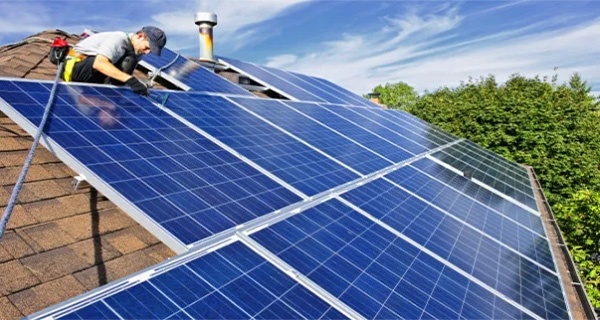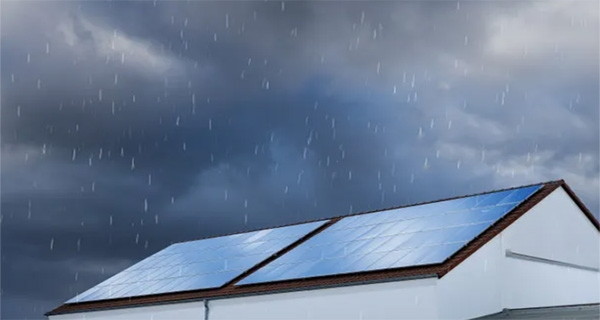Solar panels are a long-term investment for generating clean and renewable energy. With proper care and maintenance, they can last 25 years or more while maintaining a high efficiency rate. To ensure that you get the most out of your solar photovoltaic panels, it’s essential to adopt certain best practices. In this guide, we explore strategies to maximize the lifespan of solar panels.
Understanding solar panel lifespan
Most solar powered panels come with warranties that guarantee performance for 25 to 30 years. However, many panels continue to function well beyond this period, albeit with reduced efficiency. The degradation rate, typically around 0.5% to 1% per year, means that after 25 years, a panel may still operate at approximately 75-88% of its original capacity.
Factors influencing lifespan include:
- Quality of Materials. High-quality materials are more resistant to wear and tear.
- Installation Standards. Proper installation minimizes risks of damage.
- Environmental Conditions. Panels in extreme climates may degrade faster.
- Maintenance Practices. Regular upkeep ensures sustained performance.

Proper installation
Correct installation plays a critical role in the longevity of solar pv panels. Improper mounting or poor electrical connections can lead to premature wear or even hazardous situations.
Installation tips:
- Hire Certified Installers. Ensure that the installers are licensed and experienced in setting up solar systems.
- Optimal Placement. Install panels at the correct angle and orientation to maximize sunlight exposure and minimize shading.
- Robust Mounting Systems. Use durable mounting structures to withstand wind, snow, and other environmental stresses.
- Inspect Electrical Connections. Loose or faulty connections can lead to overheating and reduced performance.
Regular cleaning and maintenance
Regular cleaning of solar panels
Regular cleaning is crucial for maintaining the efficiency and longevity of pv solar panels. Over time, dust, dirt, bird droppings, and other debris can accumulate on the surface, reducing their ability to absorb sunlight effectively. Cleaning should be done at least twice a year or more frequently in areas prone to heavy dust or pollution. Use a soft brush, water, and mild soap to avoid scratching or damaging the panels. Automated cleaning systems or professional services are also available for larger installations. Performing this routine ensures maximum energy output and prevents long-term wear and tear caused by dirt buildup.
Routine maintenance for optimal performance
In addition to cleaning, regular maintenance is essential to ensure the solar system operates efficiently. Inspect panels for cracks, discoloration, or loose connections, as these can impact performance. Check the inverter to confirm it is functioning correctly and review energy output levels to detect any irregularities. Trim nearby trees or vegetation to prevent shading, which can decrease efficiency. Proper maintenance, conducted by qualified professionals when necessary, not only prolongs the lifespan of the solar photovoltaic panels but also guarantees a reliable and consistent energy supply. Prioritizing both cleaning and maintenance will maximize your investment in solar energy.
Protect panels from environmental damage
Solar power panels are a long-term investment in sustainable energy, but they require protection from environmental damage to ensure optimal performance and longevity. One common risk is debris accumulation, such as dirt, leaves, or bird droppings, which can obstruct sunlight and reduce efficiency. Regular cleaning with water and non-abrasive materials helps maintain their surface clarity. Additionally, installing panels at an angle allows rainwater to wash away debris naturally. Protective coatings, such as hydrophobic or anti-reflective films, can also enhance durability by preventing scratches and minimizing dirt buildup.

Extreme weather events, like hailstorms, high winds, or heavy snowfall, pose significant risks to photovoltaic panels. To mitigate these, opt for high-quality panels with robust materials, such as tempered glass, designed to withstand harsh conditions. Installing panels with secure mounting systems helps prevent displacement or damage during storms. For regions prone to hail, consider adding impact-resistant covers or shields. Snow can be managed by using frames with heating elements to aid melting or by manually clearing the panels after a snowfall. Regular inspections ensure early detection of issues like cracks or loose components, further extending the panels' lifespan. By implementing these strategies, homeowners can protect their solar pv panels, ensuring efficient energy production and a longer operational life despite environmental challenges.
Minimize shading
Shading can significantly reduce the efficiency of solar power panels and create hot spots that may damage them over time. How to Reduce Shading:
- Trim Nearby Trees. Regularly trim branches that may cast shadows on your panels.
- Optimize Placement. Avoid installing panels near objects that may block sunlight.
- Use Microinverters. These allow individual panel optimization, minimizing the impact of shading.
Protect against pests
Solar panels are a valuable investment, but pests like birds, squirrels, and rodents can cause significant damage if left unchecked. They often nest under panels, chew on wiring, and create debris that blocks sunlight, reducing energy efficiency. Over time, this can compromise the performance and lifespan of the solar system. Pest-related damage not only increases maintenance costs but can also void warranties if proper precautions aren't taken.
To protect your photovoltaic panels and maximize their lifespan, installing protective measures is essential. Mesh barriers or critter guards are effective in preventing pests from accessing the underside of the panels. Regular cleaning and inspection help detect early signs of pest activity, such as droppings or damaged wiring. Additionally, trimming nearby trees can reduce access points for animals and prevent debris accumulation. Investing in professional pest control services for periodic assessments ensures your solar system remains efficient and durable, safeguarding your investment for years to come.
Conclusion
Maximizing the lifespan of your solar powered panels involves a combination of proper installation, regular maintenance, and proactive measures to protect against environmental and physical damage. By following these guidelines, you can ensure that your solar investment continues to provide clean and reliable energy for decades. At the same time, if you want to learn more about solar panels, Inverter Store will also help. Remember, a little effort in care and maintenance goes a long way in preserving the efficiency and longevity of your pv solar panels.
